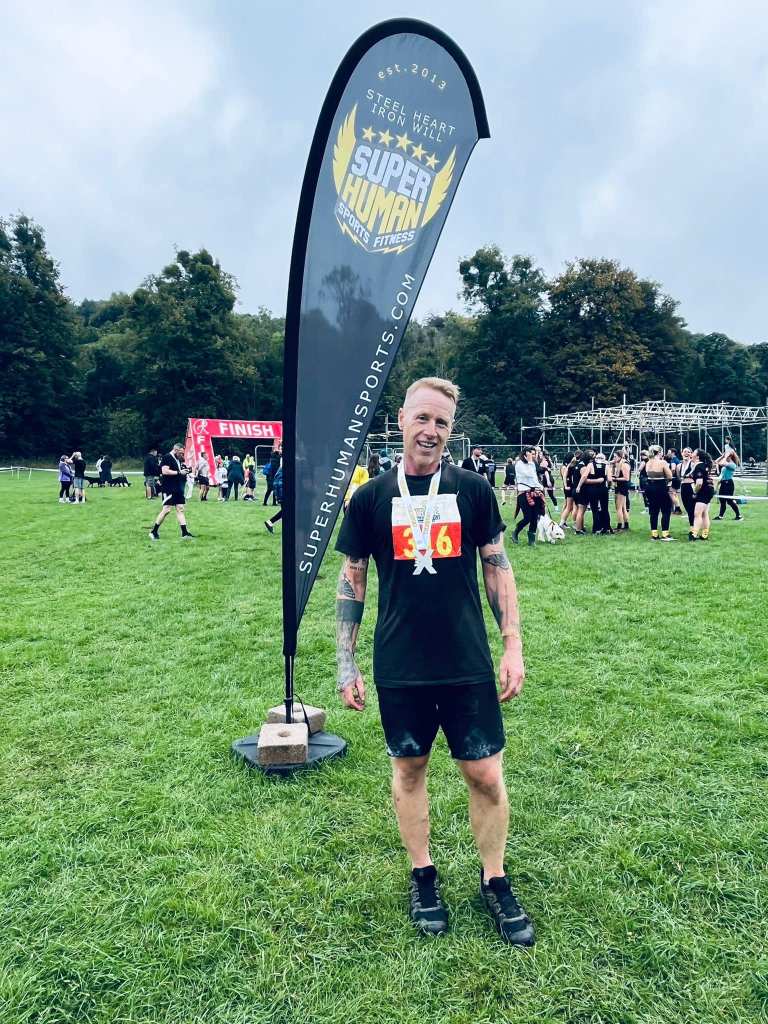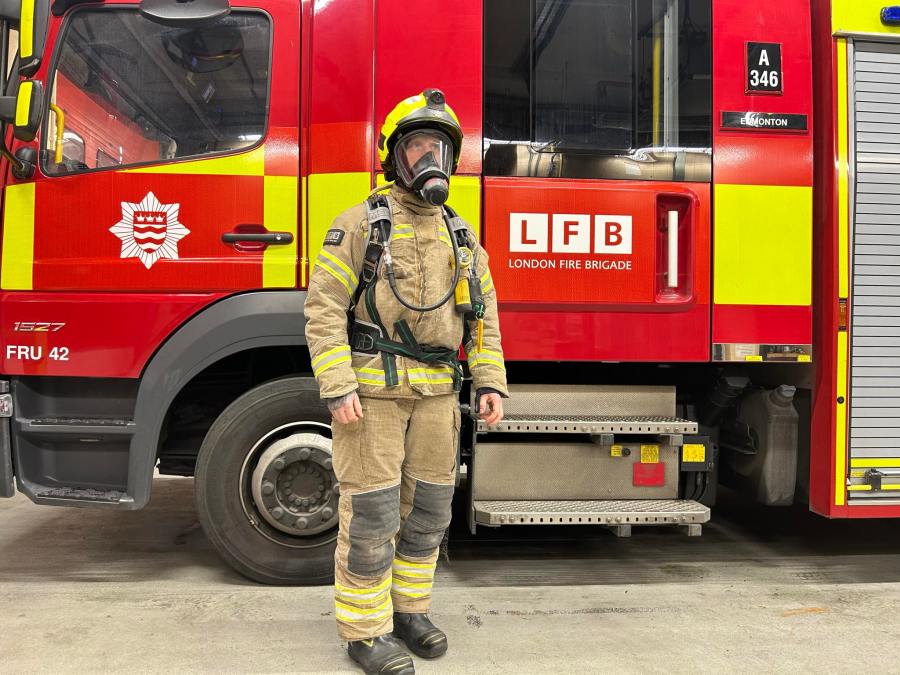Firefighter Steve Moore, 54, from Buckinghamshire, is no stranger to extreme challenges. Having previously run to all 103 London fire stations, he’s now taking on the 2025 London Marathon in full firefighting gear – helmet, fire boots, and breathing apparatus – while running under oxygen in a bid to raise money for the Firefighters’ Charity.
Men’s Fitness: Have you always been a runner?
Steve Moore: Kind of. I played a lot of sports in my younger days. I started running in my mid-20s to keep fit. Eventually, I joined a running club and got into races. I took part in the Tough Guy races back in the day. I even finished in the top 50 one year, which got me an invite to SAS: Are You Tough Enough? but I was too scared to go! Looking back, I wish I had.
MF: For a previous challenge you ran to all 103 London Fire brigade fire stations. How did that come about?
SM: When I was at Edmonton Fire Station, I saw a map of all London Fire Brigade stations and thought, “I wonder if I could run between them?” I’d done ultra-marathons before, so I spent months planning a route to make it as efficient as possible.
MF: And what was the final distance?
SM: Over 300 miles. I aimed to finish in five days, doing around 60 miles per day, but things didn’t go to plan. I got lost a couple of times! I could have finished at midnight on day five, but I wanted a proper finish with my colleagues and family, so I ran the final 25 miles in daylight on day six. My final time was five days and six hours.

MF: Now you’re taking it even further – running the London Marathon in full fire gear. How has that changed your training?
SM: Completely. My last marathon was in 2023, and I didn’t really train for it! I had just done a 24-hour burpee challenge and wasn’t training for the marathon. During that marathon, I saw a firefighter running in a breathing apparatus, and I thought, I wonder how tough that is? That stuck with me. Now, instead of just endurance training, I’ve had to focus on quality over quantity, including dreaded speed sessions.
MF: What’s the biggest challenge of running in full kit?
SM: The breathing. The gear is heavy, but firefighters are used to carrying weight. The real struggle is running with restricted airflow through the face mask. It’s like those altitude training masks, but worse. It makes everything harder—your heart rate spikes, your legs feel heavier. Plus I’ll be changing oxygen tanks at least a dozen times – with a target time of 4 hours and 42 minutes.
MF: How do you fit training around your shifts?
SM: Firefighters work in an eight-day cycle: two day shifts, two night shifts, then four days off. I do my long runs before night shifts and use the treadmill in full gear after night shifts to get used to the weight and restricted breathing.
MF: What’s a typical training week like?
SM: It follows my work cycle. I do:
- Long runs (trail and road) before night shifts
- Treadmill acclimatization runs after night shifts
- Interval sessions for speed
- Strength training (heavy weights, low reps)
- Static bike work to keep my legs moving without extra impact
- Treadmill equipment runs at least once a week with a BA set on and fire tunic.
The longest run I’ve done so far is 18 miles, and I’ll build up to 22 miles two weeks before the marathon before tapering.
MF: How do you juggle your training diet with shift work?
SM: When I’m on a day shift I’ll do a short recovery run of 5-6 miles before work – fuelled by a banana or two. For long runs, I fuel up with hot cross buns (sometimes with peanut butter and jam). At the fire station the meals are hearty – eggs, burgers, or katsu curry – while shifts demand quick, easy snacks like bananas. During runs, I rely on Naak drink powder and SIS or Torq gels. Post-training, I recover with a protein shake. I don’t count calories—I just listen to my body and eat what I need to fuel firefighting and running.
MF: How do people react when they see you training in full gear?
SM: I mostly train on the treadmill at the fire station because I live an hour outside London, but when I do wear it in public, people definitely notice!
I’ll have a support team on the day – my watch commander, station commander, and borough commander, we’ve planned 12 set changes along the route. We’ll have 15 breathing apparatus sets with spares.
MF: Where can people support your challenge?
SM: I’m raising money for The Firefighters’ Charity, which helps firefighters and their families in times of need.
• To support firefighter Steve Moore’s epic challenge, donate here: JustGiving – Steve Moore







